What makes so many of us fans of romantic comedy? Is it because we love the nail-biting angst of watching a couple who are perfect for one another struggle to figure it out? Or is it because we love to laugh? Or is it just that we all revel in a happy ending?
Maybe it’s a combination of all of those things, but from a writer’s perspective, how do you create a story with the humor and deep feels a successful rom-com needs? Start with these seven romantic comedy beats (and a rom-com plot structure template).
What is the Seven Romantic Comedy Beats Plot Structure?
The Seven Romantic Comedy Beats outlines a formula for writing romantic comedy based on ideas by Billy Mernit.
Once a successful romance novelist for Harlequin, Mernit has been working as a story analyst for major Hollywood studios for over 20 years and is the author of the definitive rom-com screenwriting guide, Writing the Romantic Comedy. His formula is based on seven essential plot points, or beats, that make up a successful romantic comedy.
Who is the Seven Romantic Beats Plot Structure for?
Although the structure can be used for a variety of sub-genres, the Seven Romantic Beats formula is ideally suited for contemporary romantic comedies.
It’s perfect for pantsers who prefer to organize their stories in a more general, flexible style that reminds them to hit important plot points at the right time, but doesn’t lock them into a rigid outline.
Let’s take a closer look at each of the seven beats so you can see what we mean. We’ll use Jilly Cooper’s rom-com, Prudence, as an example.
Plot Points of the Seven Romantic Comedy Beats
What are essential plot points in rom-com plot structure? They include:
Beat 1: The Chemical Equation (Setup)
This is your story’s opening scene or sequence. It’s your chance to introduce the protagonist, along with their internal or external conflict. It’s not necessary to explicitly state what that conflict is at this point, but it’s important for the reader to realize that something is “off” or “wrong” in the character’s normal status quo.
Curiosity will make your reader keep reading … hopefully.
Example: In Prudence, the set up is an example of “opposites attract.” The heroine Pru is a scattered, fun-loving girl looking for love. The love interest, Ace, is a widower and too serious for his own good.
Beat 2: Meet Cute (The Catalyst)
This is the fun part: the inciting incident, when you get to bring the protagonist and the love interest together and into conflict.
There are at least a million different ways two people can meet, but whichever you choose, try to make it creative, credible, and amusing. (Remember, it’s a romantic comedy!) There may be an instant attraction … or an instant dislike.
Whether sparks fly or not, make it obvious that your protagonist is absolutely not yet ready for the relationship.
Example: Ace walks in to find Pru kissing her boyfriend’s brother. He decides Pru is nothing but a flirt, and Pru decides Ace is an overbearing bully.
Beat 3: A Sexy Complication (Turning Point 1)
A new development raises the stakes and clearly defines the protagonist’s external goal. Heighten the romantic tension by pitting this goal against the needs and goals of the love interest.
Sparks are beginning to fly, but not necessarily in a good way — and conflict looms on the horizon.
Example: Pru is devastated to discover her boyfriend still loves his ex, so Pru continues flirting with his brother to make him jealous. Ace tries to warn her off from her behavior and she ends up screaming at him.
Beat 4: The Hook (Midpoint)
This is the middle of Act 2. Your protagonist and love interest are still committed to their individual goals, but their growing emotions for each other begin to cause conflict.
A situation develops that brings the two of them closer, while also making it obvious to the protagonist that the relationship can’t work due to their opposing goals — or maybe their false beliefs about each other.
Example: Lovelorn Pru develops the flu. Ace is surprisingly kind and caring, even bringing her a kitten to make her feel better. Pru feels a spark of attraction to him.
Beat 5: Swivel (Turning Point 2)
By now, the protagonist and love interest have grown closer and may even have shared an intimate moment. The stakes reach a high point as the importance of the relationship threatens to interfere with your protagonist’s main goal; they must realize by now that a decision must be made.
This is when readers, too, must take a deep breath, anxious to see what the protagonist decides.
Example: Ace turns out to have an old flame who shows up for a visit — and she’s terrifyingly suitable.
Beat 6: Dark Moment (Crisis Climax)
This scene is the crisis of your story — the “all is lost” moment of disaster. The protagonist realizes it’s impossible to make a success of the relationship while still achieving their goal, and everything they’ve achieved so far falls apart.
Hidden motivations, betrayals, or fears are revealed and the couple breaks up, making it doubtful they will ever find their way back to each other. Now the reader is rapidly flipping pages, praying the couple will wise up and work things out.
Example: Pru thinks that Ace and his old flame are once again a couple. She slinks back to London, steeped in misery.
Beat 7: Joyful Defeat (Resolution)
This is when the protagonist and love interest are forced to decide if they will give up on the relationship or sacrifice their own wants and needs to make it work. What’s most important? Their feelings for each other or their previous goals?
Since this is a romantic comedy, they will of course choose each other.
(Be warned that if the couple doesn’t end up together, the reader will likely throw the book, or e-reader, across the room and refuse to ever read another of your stories … and who could blame them?) So, give the story a happy ending that implies marriage — or at least a serious commitment — often at the cost of some personal sacrifice to the protagonist.
Example: Pru and Ace choose each other in the end, there relationship winning out over the threat of the old flame.
Check out another beat sheet showing this plot structure. A beat sheet on the Nancy Meyers movie, The Holiday.
How to Use the Seven Romantic Beats Plot Structure in Plottr
Now that you have a general idea of what needs to happen in your story during each of the seven romantic comedy beats, let’s explore how to use this story structure with Plottr templates. First, make sure you have an active Plottr plan or start a free 60-day trial. Then follow these steps:
- Step 1: In the Files section of the Plottr dashboard, click Create from Template
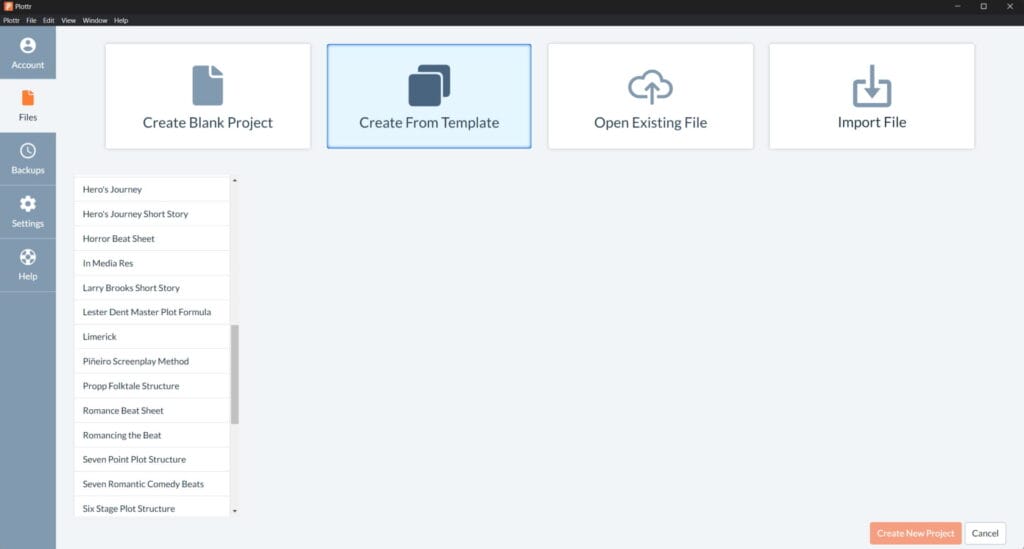
- Step 2: Scroll to the template Seven Romantic Comedy Beats, select it, then click Create New Project
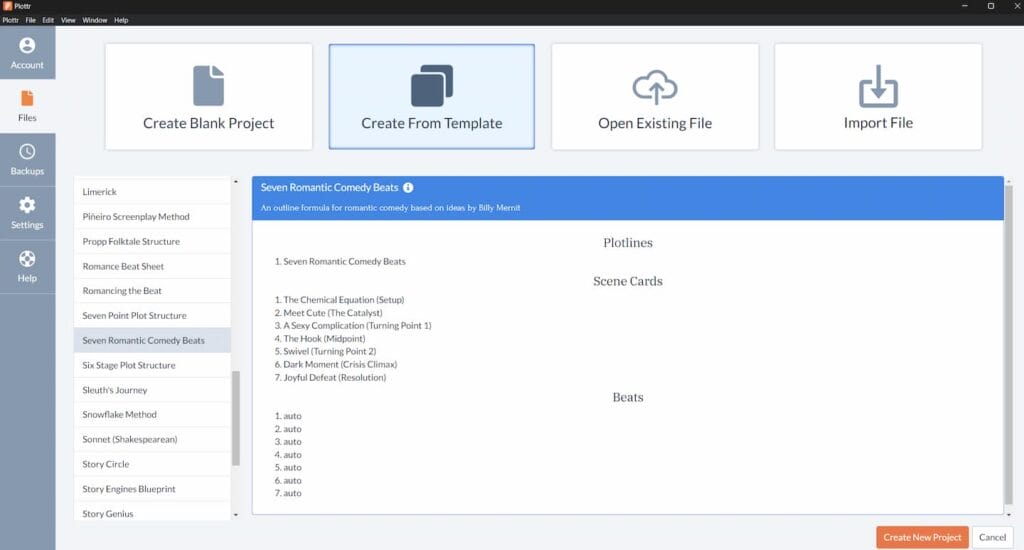
- Step 3: Name your project so you can easily find it later, and the rom-com plot structure template will open in timeline view
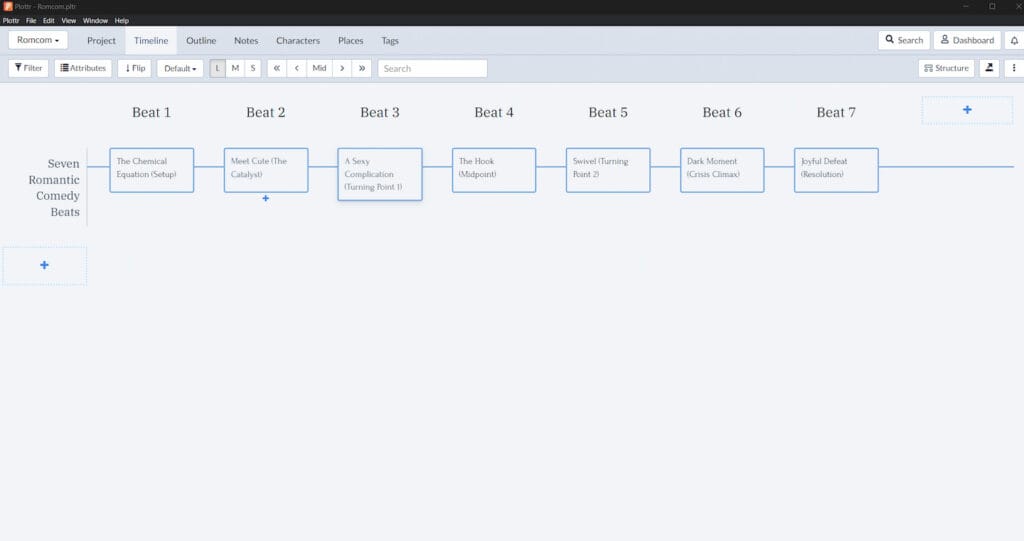
- Step 4: Click any of the beat scene cards to expand them and start adding ideas (you can delete the guideline text or leave it in for further guidance)
Plot templates in Plottr work well together. If you would like to add a secondary plotline for a character or subplot, try one of the following templates of similar length:
Ready to craft your own happy ever after?
Now that you know when and where to supply all the necessary tension and feels, it’s time to create your own story. Start a free trial in Plottr and give the Seven Romantic Beats template a try. Share in the comments section below what type of romance you’re writing.
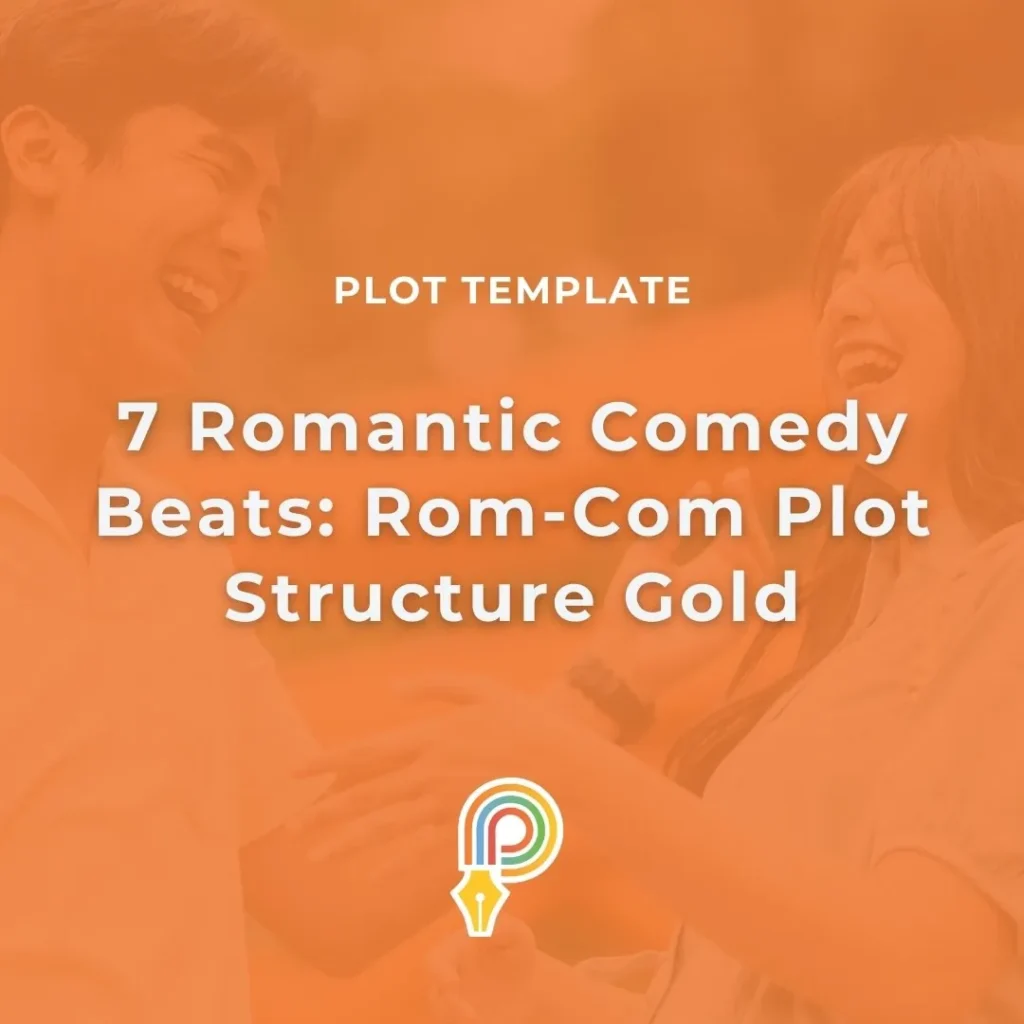

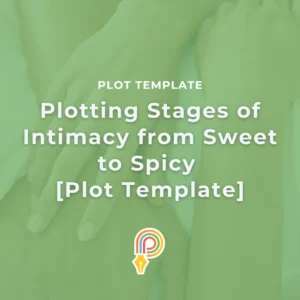
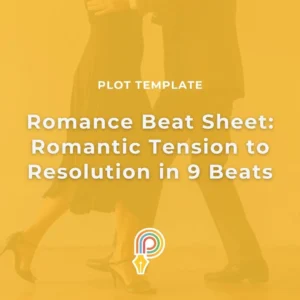
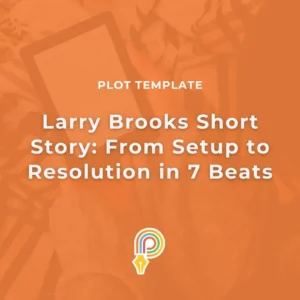



Comments